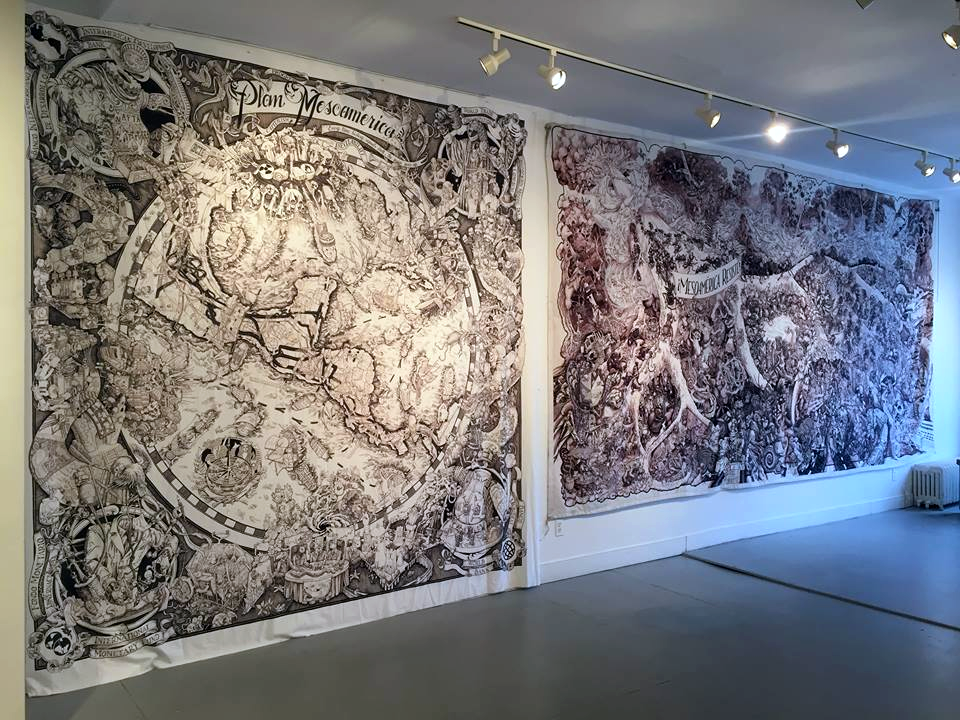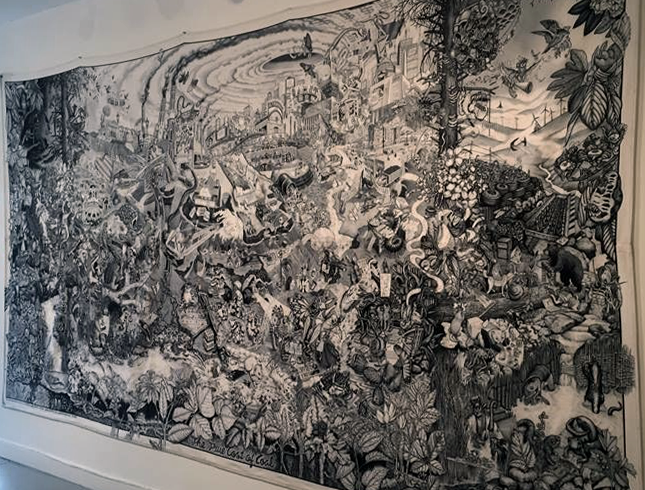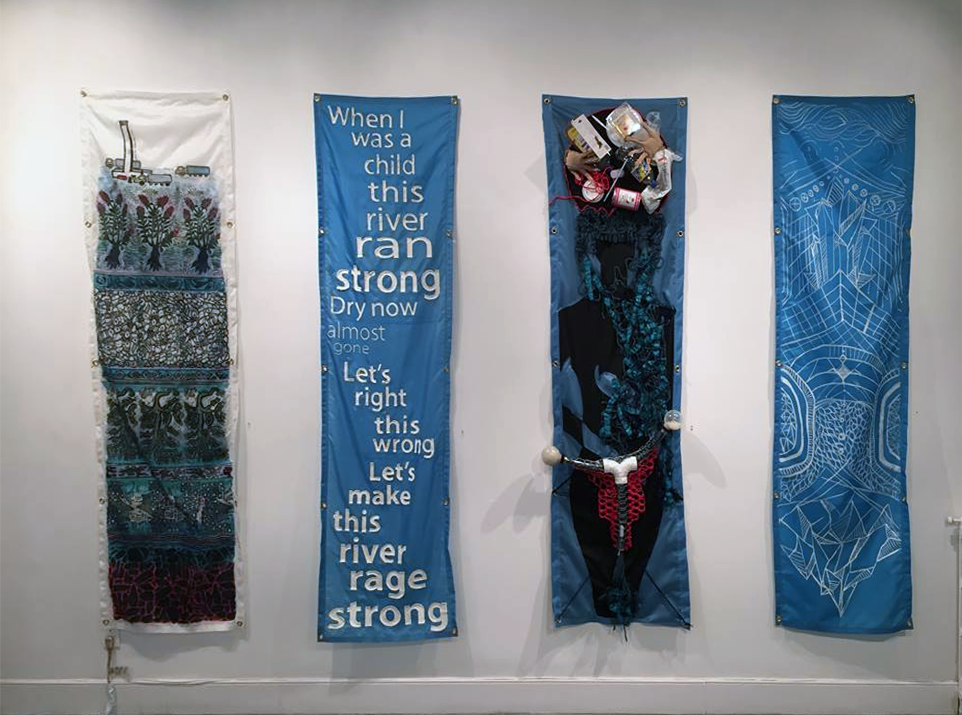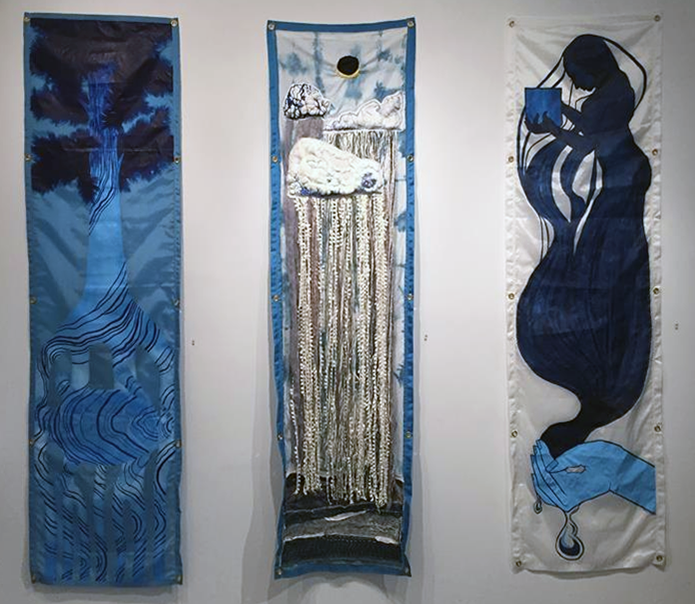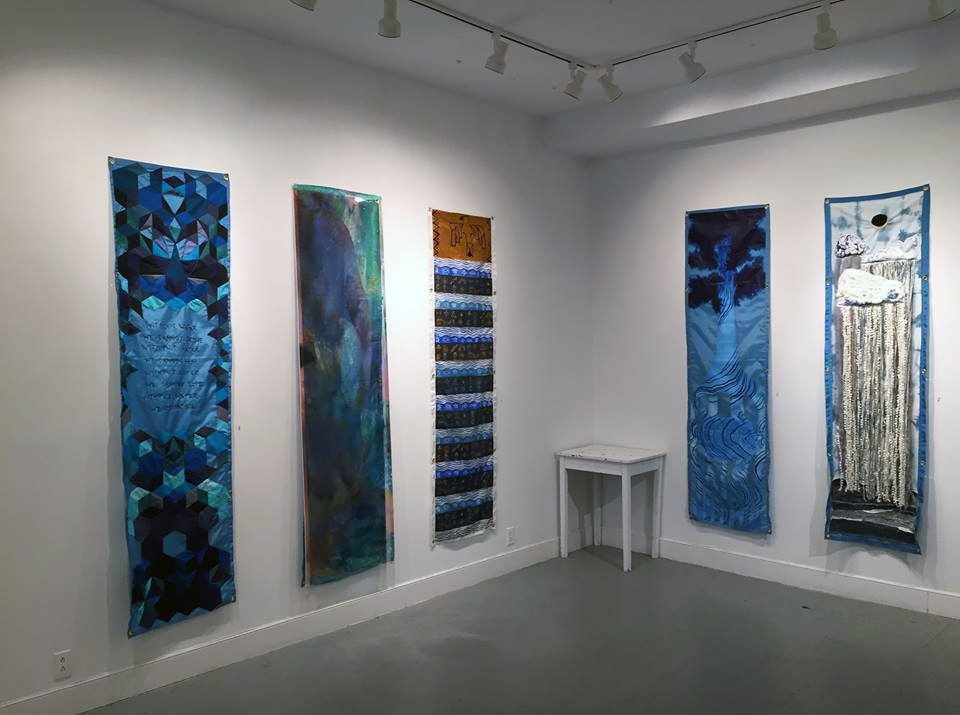Dive right into the artwork on display at loop Gallery because it has a powerful message that the public needs to soak up!
Combining artistic practices with social activism, the artworks gain cultural significance and meaning to become more than aesthetic objects, but additionally objects of protest and awareness. The exhibition, while beautiful in nature, is equally a call to action for audiences to help support initiatives that protect local watersheds. The presenting partner, The Wellington Water Watchers is a not-for-profit organization that is committed to such causes and their promotional materials, as well as petition sheets, are prominently displayed in the centre of the gallery. The co-curators of the exhibition are: Idle No More co-founder Crystal Sinclair and Rochelle Rubinstein, who is an artist and environmental activist.
The exhibition is broken down into two distinct collections within the gallery space. The first is works by the Beehive Design Collective and the second is a collection of mixed media banners.
Mesoamérica Resiste by the Beehive Design Collective
The works by the Beehive Design Collective stand out for their large-scale, incredibly dense and well-executed monochromatic graphic style. These work require extensive study, making them an extreme rich resource for teaching aids and to demonstrate visual allegories of complex histories.
First, the series “Mesoamérica Resiste” is comprised of two pieces that expand to fill the entire wall when entering the space. The work uses representational imagery, as well as symbolism and pop iconography to map out and retell the many stories and struggles of colonial and contemporary Mesoamerica. Designed as a circular map, the four corners outside the circle each contain a prominent entity, such as the World Bank and International Monetary Fund, which played a crucial role in the colonization and industrialization of the lands. The aggressive industrial and capitalism machines, in their many forms, are dominate figures throughout the print. The Kool-Aid man becomes a signifier for the exploitation of the Sugar Trade, while depictions of anthropomorphized insects engaging in various acts, represent the civilians and original inhabitants, and are show to constantly face opposition from unnatural techno-militant entities.
The True Cost of Coal (2010) by the Beehive Design Collective
The other, separate print in the show by the Beehive Design Collective is titled “The True Cost of Coal.” The work is another allegorical, historic account of the dramas that plague the Appalachians specifically, but have a direct effect on all of North America and beyond. The work is broken into vertical quadrants that begin with depictions of Ancestral life, followed by Industrialization, the central section is dedicated to the current events of mountaintop removal and climate change, then a portion depicts resistance to these atrocities and last is a hopeful future where regeneration has occurred. These series of panels are essential to a visual trick hidden within the work. If you were to follow the instructions from the Beehive Design Collective, you can actually fold the print to create a secondary image of a fully intact mountaintop, much like the visual trick popularized by the back covers of Mad Magazine publications.
The series of mixed media banners were created by a series of artists, including: Crystal Sinclair, Tannis Nielson, Claudia Wong, Sally Pang, Erika James, Carol Cheong, Paul Morin, Sarit Cantor, and more.
The collection shares the aesthetics of protest signage and quite cleverly exploits the materiality of the iconic blue, water-resistant tarps to create visual poetry or play-on-words for “Water Resistance”.
Each banner has its own individual style and approach. Some of the works rely on words to explicitly or poetically express their meaning, while others use visual language to demonstrate the pollution of the body, the destruction of the land or the loss of control over our natural resources like water. Exploration of different materials produced stunning results and pulls audiences in to further explore surfaces, while still unpacking the larger call to action for environmental and social activism.
Overall, the show is a wonderful learning opportunity for anyone interested in the praxis between the visual arts and environmental activism! Each body of work was riddled with advanced artistic techniques, further advanced by strong conceptual frameworks and lastly, placed within a contemporary and relevant context of ethical partnerships providing audiences with real and impactful steps towards making a difference right next to the artworks in the gallery, just in time for Canada’s National Water Week from March 20th to 27th and World Water Day on March 22nd, 2018.
Text and photo: Nathan Flint
*Exhibition information: March 3 – 25, 2018, loop Gallery, 1273 Dundas Street West, Toronto. Gallery hours: Wed – Thurs, 12 – 5 pm, Fri – Sat, 12 – 6 pm, Sun, 1 – 4 pm.


